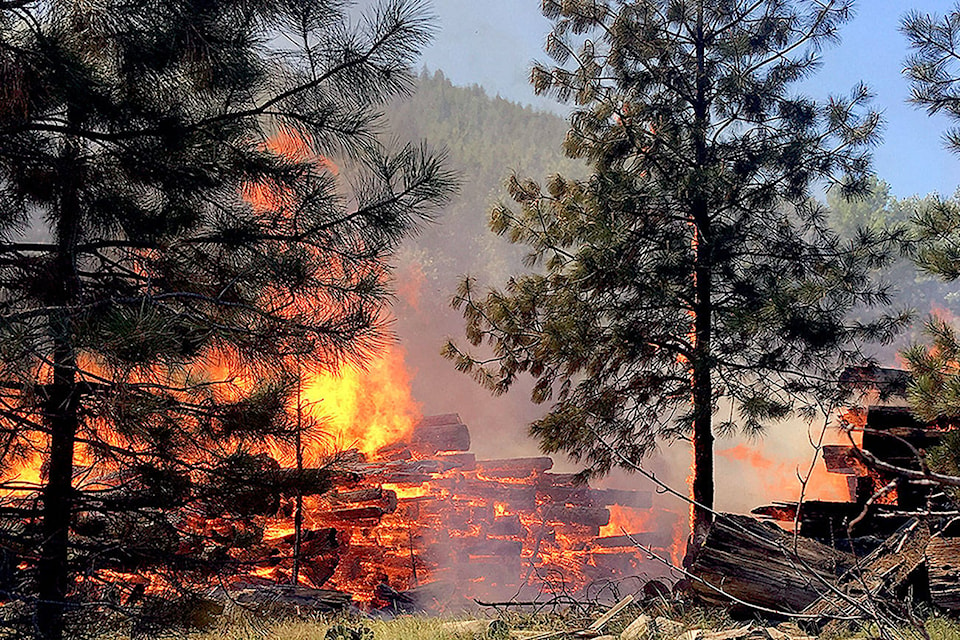A rehabilitation project for land impacted by the suppression of the Torkelsen wildfire in 2018 has been completed.
In a Dec. 23 media release the province announced it had completed all the required work at the site of Torkelsen wildfire near Fort Babine.
READ MORE: B.C. wildfires 2018: Fire crews battle blazes across the region
The fire was sparked by lightning on Aug. 4, 2018 approximately 25 kilometres south of Fort Babine — approximately 100 kilometres north of Smithers — and would go on to burn 2,524 hectares of surrounding forest.
Fireguards were built along the fire’s perimeter to help the BC Wildfire Service contain the blaze, with 89 kilometres of land requiring rehabilitation after the fire was controlled.
The project included removing woody debris from streams, mowing vegetation cleared from fireguard areas back into their original locations and sowing grass seed to help prevent further soil erosion. Water flows along the affected landscapes were also managed by the project.
The effort was a collaboration between staff from the Ministry of Forests, Lands, Natural Resource Operations and Rural Development and the Lake Babine Nation. A number of people from Fort Babine and Witset were hired to help complete the rehabilitation work using heavy equipment, as part of an ongoing training program established in partnership with local contractor Tzah Tez Tlee Development Corporation.
The project also included consulting with a biologist who was hired to provide detailed rehabilitation plans that would minimize impacts on local fish populations while the work was being completed.
READ MORE: B.C. wildfire app has alerts, bans and air quality ratings
Previous unauthorized access points along the lakeshore have also been rehabilitated and an alternative route is being planned. With stream restoration work complete, signs will be installed to advise people that all-terrain vehicles are not to be used in the areas in an effort to help protect fish habitat.
The forests ministry is responsible for rehabilitating areas impacted by wildfire-suppression operations on Crown land, as the first step in land-based recovery. When possible, the B.C. government tries to work with local governments and Indigenous groups impacted by wildfires to gather archaeological information, plan rehabilitation efforts and carry out the prescribed work.
Of the 14 wildfire sites in the Northwest Fire Zone that required rehabilitation due to the 2018 wildfires, 10 have been rehabilitated.
The remaining four (at the sites of the Nadina, Hautete, Cheslatta and Nichyeskwa wildfires) are expected to be completed in 2020.
trevor.hewitt@interior-news.com
Like us on Facebook and follow us on Twitter
